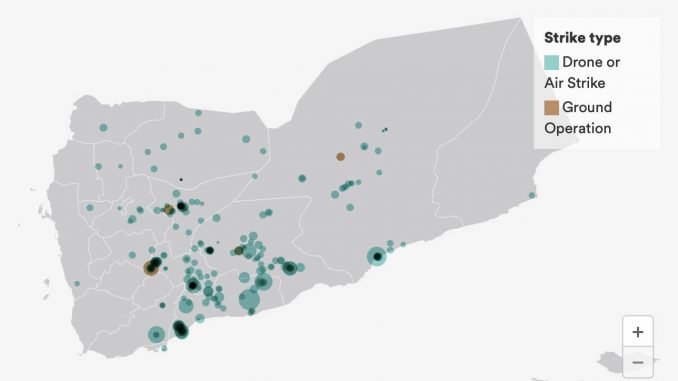
While it almost never makes the mainstream/drive by media today, America's counterterrorism war continues unabated after nearly 20 years. Thanks to research by New America, we can track Washington's actions in Pakistan, Yemen, Somalia and Libya. In this posting, we'll look at the operations in Pakistan, Yemen and Libya, how many people were killed and how each presidential administration was involved.
1.) The drone war in Pakistan: The first known American drone strike in Pakistan took place on June 19, 2004, killing Taliban leader Nek Muhammad. Under the Bush Administration, the drone war was limited until 2008 when strikes escalated, continuing until they peaked in 2010 and slowly declined until May 21, 2016, the date of the last attack during the Obama Administration which killed Taliban leader Mullah Akhtar Mansour. On March 2, 2017, the Trump Administration conducted its first strike in Pakistan after a 9 month pause. Thus far, no attacks have taken place under the Biden Administration.
Here is a graphic showing the U.S. air and drone strikes in Pakistan by Administration and year:
Here is a graphic showing the deaths of militants, civilians and people of unknown status from these strikes by year:
Here are the total strikes and deaths by Administration:
Bush – 48 strikes killing 399 to 540 people (116 to 137 confirmed civilians)
Obama – 353 strikes killing 1,934 to 3,094 people (129 to 162 civilians)
Trump – 13 strikes killing 33 to 68 people (0 to 4 civilians)
Only 3.1 percent of the total people killed by U.S. drone strikes in Pakistan were militant leaders.
2.) Yemen: The first known American drone strike in Yemen took place on November 3, 2002, killing Qaed Salim Sinan Al-Harithi who was believed to have devised the attack on the USS Cole which killed 17 American military personnel. This was the sole drone attack on Yemen under the Bush Administration. Under the Obama Administration, a further 185 drone attacks took place followed by 106 confirmed strikes under the Trump Administration (with an additional 82 attacks with insufficient detail). In 2017, the United States conducted more individually identifiable strikes than in any other year except 2012. Over the period between March 2 and 6, 2017, the U.S. military undertook between 25 and 40 attacks using a combination of drones and air attacks. Thus far, no attacks have taken place under the Biden Administration.
Here is a graphic showing the U.S. air and drone strikes in Yemen by Administration and year:
Here is a graphic showing the deaths of militants, civilians and people of unknown status from these strikes by year:
Here are the total strikes and deaths by Administration:
Bush – 1 strikes killing 6 militants (no confirmed civilians)
Obama – 1853 strikes killing 1,094 to 1,394 people (88 to 101 civilians)
Trump – 106 strikes killing 278 to 375 people (27 to 48 civilians)
Only 6 percent of the total people killed by U.S. drone strikes in Pakistan were militant leaders.
Here is a map of Yemen showing how geographically widespread the American air, drone and ground operations are in Yemen:
3.) Libya: Libya is one of the many nations that have "benefitted" from the extension of America's armed drone program outside of the two main conventional war zones of Afghanistan and Iraq. The Obama Administration's Presidential Policy Guidance (PPG) authorized drone and air strikes between August 2016 and December 2016 under Operation Odyssey Lightning with the goal of destroying ISIS' stronghold in Sirte. Under the Trump Administration, PPG was replaced with Principles, Standards and Procedures (PPS) in 2017.
Libya's first civil war began on February 15, 2011 with backing from NATO, United States and the United Kingdom (among other members of the international coalition) and its replacement government was officially recognized by the United Nations on September 16, 2011 with the official end of the war being declared on October 23, 2011. A second civil war began on May 16, 2014 between various militias and ended on October 23, 2020 when a permanent ceasefire was signed and ratified between the opposing forces.
After NATO's intervention in 2011, various nations have undertaken a lengthy series of air, drone and artillery strikes in Libya since the end of the United Nations-sanctioned campaign on October 31, 2011. Estimates show that 4517 attacks took place with between 624 and 915 civilians being killed between September 2012 and March 15, 2020 as shown on this table:
Here is a graphic which shows monthly strikes by each of the belligerents in Libya with LNA being the Libyan National Army, GNA being the Government of National Accord and GNC being the General National Congress which controlled Libya between 2012 and 2014, noting that the United States has been involved intermittently throughout the war:
Here is a graphic showing the U.S. air and drone strikes in Libya by Administration and year:
Here is a graphic showing the deaths of militants, civilians and people of unknown status from these strikes by year:
Despite the fact that the ongoing War on Terror has received almost no coverage over the past year and a half, data from this study by New America would suggest that drone and airstrikes launched by Washington are still claiming innocent civilian lives in regions of the world outside of the conventional war zones in Afghanistan and Iraq.On the upside, the continued use of these high tech weapons is making the corner office dwellers in the defense industry very, very happy despite the fact that these operations are negatively impacting thousands of innocent civilians who just happen to be in the wrong place at the wrong time.
You can publish this article on your website as long as you provide a link back to this page.

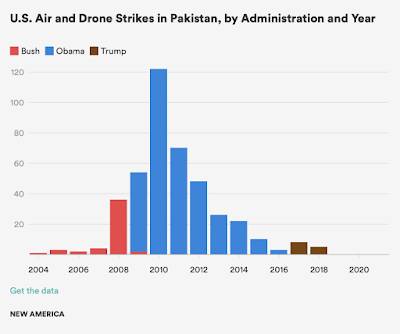
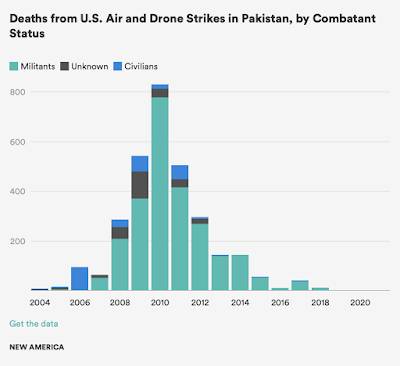
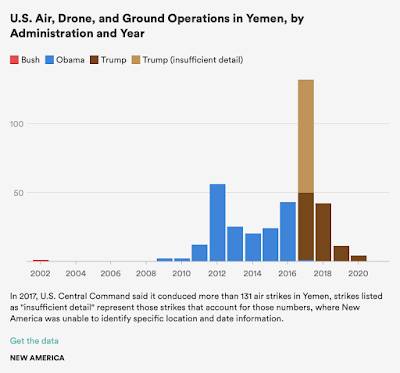
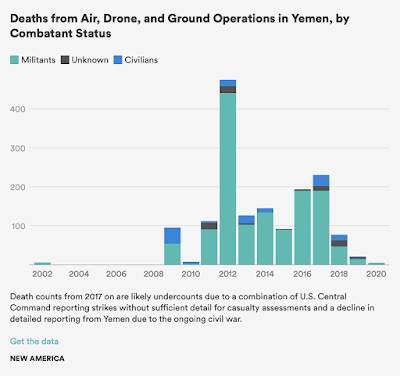
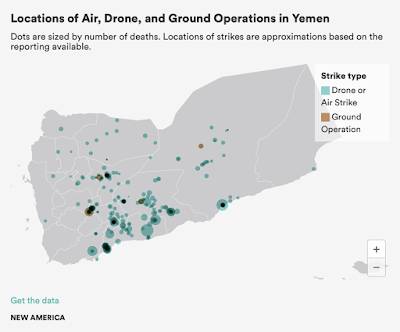
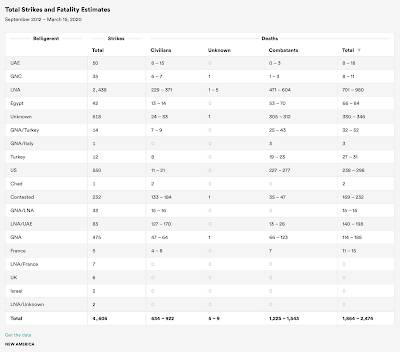
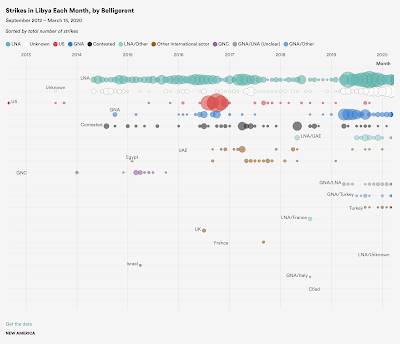
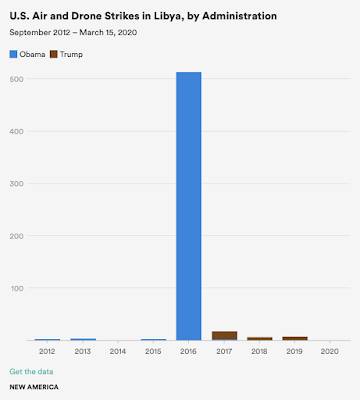
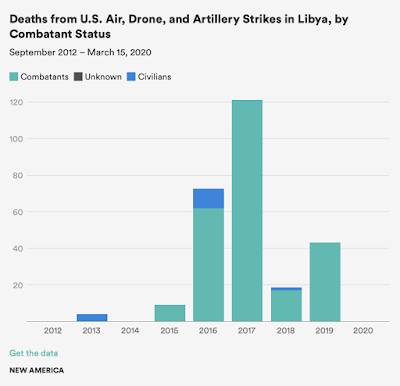
Be the first to comment